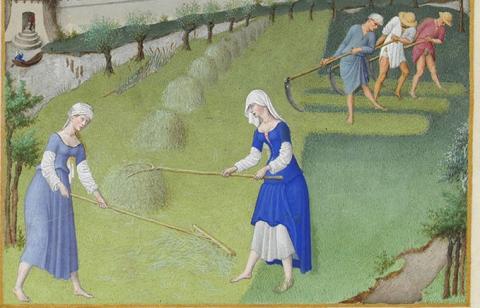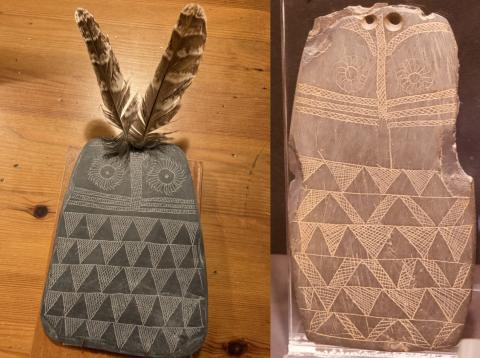Revealing a female-centred society during the Iron Age
An international team of geneticists and archaeologists has analysed more than 50 ancient Iron Age genomes from an area of southern Britain. Their conclusions are that they belonged to a matrilocal society, in which land was inherited through the female line and husbands moved in with the community of their wives. The results are published in the journal Nature and would be the first such finding in prehistoric Europe.

Burial of a young woman from Langton Herring sampled for DNA. She was buried with a mirror (right panels) and jewellery. Credit: Bournemouth University.
Marina Lozano - mujeres Edad Hierro EN
Marina Lozano
Researcher at IPHES-CERCA and associate professor at the Rovira i Virgili University of Tarragona (URV)
This study is very interesting, both for the conclusions it draws and for the methodology applied. The methodology applied follows all the current standards for genetic analysis of ancient DNA, with different types of analysis being carried out to demonstrate the hypotheses established. The research is rigorous and of high quality.
In recent years, ancient DNA studies have made it possible to obtain information on aspects unknown from more classical approaches, such as bioarchaeology and archaeology. Specifically, knowing the kinship relationships between the people buried in ancient necropolises allows us to determine aspects of their social organisation and hierarchy that are otherwise difficult to find out with certainty.
The main novelty of this study is the identification of a matrilocal society in the Iron Age. In a specific area of the island of Britain, generations of women have been certified to be related to foreign men, who were the ones who moved to live in the geographical area of their wives. This is one of the major novelties of this study, since the general rule identified in studies since the Neolithic (and even among Neanderthals) is that women were the ones who left their natal group to move to the group of their male partner.
However, according to this study, already during the Bronze Age on the island of Britain it was the men who moved. From this it can be inferred that women were closely linked to the land, being the owners and having great prestige and power. Such a pattern of women having this prestige is unusual, and established over generations.
However, there is other evidence of social and political empowerment of women in the Bronze Age, such as the case of a female burial at La Almoloya (Pliego, Murcia) from the El Argar culture, where the woman buried in tomb 38 seems to have had a high social and possibly political status.
Studies such as this one are interesting because they make gender roles visible, where female individuals have a status that has traditionally been granted to men. It makes it clear that social structures in the past were much more diverse than previously thought.
One of the few limitations of the study (and of which the authors themselves are aware) is the scarcity of human remains of similar chronology in Britain to be able to carry out a larger-scale study and establish whether this matrilocal system was widespread throughout the island or only in that area. However, through the study of Bronze Age remains from the same island, the authors infer that this social system probably began to develop prior to the Iron Age and would not be confined to the main study area.
Teresa Fernández - mujeres Edad de Bronce EN
Teresa Fernández-Crespo
Distinguished Senior Researcher in the Department of Prehistory, Archaeology, Social Anthropology and Historiographic Sciences and Techniques at the University of Valladolid
This is a relevant study for two reasons. Firstly, there are hardly any genetic studies on Iron Age remains because in much of Europe at that time cremation, open-air exposure or water deposition of the dead was the dominant ritual, which is not conducive to the preservation of human remains. And secondly, because the interpretation contrasts with the majority of published data for recent European prehistory, which generally suggest a patrilineal social structure and a patrilocal residence system. Further research will undoubtedly be necessary to complete and qualify the proposed social interpretation, but it is a stimulating possibility to assess other forms of social organisation.
Cassidy et al.
- Research article
- Peer reviewed



